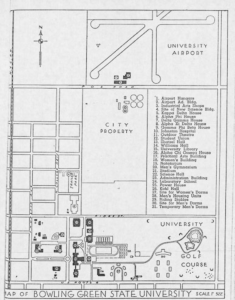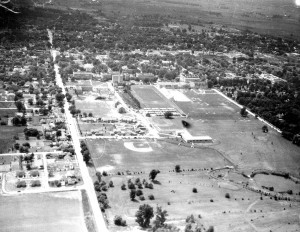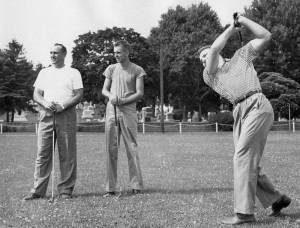By March 1946 construction of the new University Golf Course was complete and was open for play in late summer after grass had grown on the greens.
Since the University did not have a golf course, the varsity golf team and physical education classes in golf practiced a mile and a half away at the Bowling Green municipal course in City Park. The plan for a University golf course originated with University President Frank J. Prout, Herman Geiser (business manager), Harold Anderson (Athletic Director), Warren Steller (coach), and Dale Sautter (custodian of the physical education buildings). During a University Board of Trustees meeting on January 10, 1944, the persistent demand by members of the Physical Education Department for a golf course was discussed. It was agreed that a golf course would be constructed on the east end of campus where a need for landscaping was also identified.
University President Dr. Frank J. Prout officially announced the plans to construct a golf course on December 13, 1944. He explained that the project would be completed economically since only a small a mount of work would be necessary to turn the existing plot of land into a golf course.
mount of work would be necessary to turn the existing plot of land into a golf course.
Construction of the new, nine-hole course took about 18 months and was completed by the University maintenance crew with the help of the Navy students stationed at the University who helped remove rocks from the area. It was built on land originally used for farming by the agricultural department up until 1935.
The completed course was not as large as the municipal course at City Park. However, it was 35 to 40 acres and a complete round covered about a mile. The course was also intended to be used as a general recreation area. Sautter explained, “we don’t want it to be thought of only as a golf course…for there are tables and fireplaces there for any of the students to use.” Dr. Clair Powell, associate professor of industrial arts, constructed the fireplaces, and several picnic tables were added. The existing pond located next to the new golf course was also stocked with fish with the advice and assistance of the State  Department of Conservation.
Department of Conservation.
Visit the Recreation and Wellness digital timeline to learn more.


